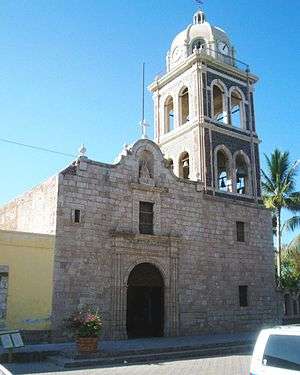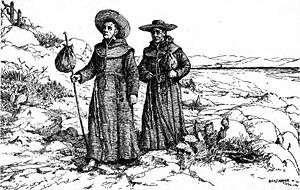Reductions
Reductions or in Spanish reducciones, also called 'congregaciones', (Portuguese: redução, plural reduções) were settlements created by Spanish rulers in Spanish America and the Spanish East Indies (the Philippines). The Spanish relocated, forcibly in many cases, indigenous inhabitants of their colonies, (los indios) into settlements modeled on towns and villages in Spain. In Portuguese-speaking Latin America, reductions were also called aldeias.

Part of a series on |
| Spanish missions in the Americas of the Catholic Church |
|---|
 |
| Missions in North America |
| Missions in South America |
| Related topics |
|
|
The Caribbean
The policy of reductions began on Caribbean islands in 1503. In the words of the Spanish rulers, "It is necessary that the Indians be assigned to towns in which they will live together and that they not remain or wander separated from each other in the backcountry." The Spanish ordered that Indian villages be destroyed and selected sites for new villages to be built. The concentration or reducción of the Indian population facilitated the Spaniards' access to Indian labor, the promulgation of Christianity, and the collection of taxes and tribute.[1] Moreover, the reduction of the Indians was intended to break down ethnic and kinship ties and detribalize the residents to create a generic Indian population.[2]
North America
Reductions began in Mexico shortly after Cortés' conquest in the 1520s and were begun in Baja California in the 17th century and California in the late 18th century. Reductions in Mexico were more commonly known as congregaciones.[3]
South America
Indian reductions in the Andes, mostly in present-day Peru and Bolivia, began on a large scale in 1570 during the rule of Viceroy Francisco de Toledo. Toledo aimed, with some success, to remake the society of the former Inca empire and in a few years resettled about 1.4 million Indians into 840 communities, many of which are the nucleus of present-day cities, towns, and villages.[4] Probably the most famous of the reductions were in Paraguay and neighboring Argentina, Brazil, and Bolivia in the 17th and 18th centuries which were created and governed by the Jesuit order of the Catholic Church.[5]
Philippines
In the Spanish Philippines, the Spanish colonial government founded hundreds of towns and villages across the archipelago modeled on towns and villages in Spain. The authorities often adopted a policy of reductions for the resettlement of inhabitants in far-flung scattered Barrios or barangays to move into a centralized cabecera (town/district capital) where a newly built church and an ayuntamiento (town hall) were situated.[6] This allowed the government to defend, control and Christianize the indigenous population, to conduct population counts, and to collect tributes.
See also
- Indian reductions in the Andes
- Jesuit reductions
References
- Mumford, Jeremy Ravi (2012, Vertical Empire: The General Resettlement of Indians in the Colonial Andes, Durham: Duke University Press, p. 44
- Stern, Steve J. (1993), Peru's Indian Peoples and the Challenge of Spanish Conquest, Madison: University of Wisconsin Press, p. 80
- Leal, Juan Felipe and Rountree, Mario Huacuja (2011), Economic y sistema de haciendas en Mexico, Juan Pablos, Editor, D. R. Voyeur, pp. 22-23
- Mumford, p. 190
- Caraman, Philip (1976), The lost paradise: the Jesuit Republic in South America, New York: Seabury Press.
- Constantino, Renato; Constantino, Letizia R. (1975). "Chapter V - The Colonial Landscape". The Philippines: A Past Revisited (Vol. I) (Sixteenth Printing (January 1998) ed.). Manila, Philippines: Renato Constantino. pp. 60–61. ISBN 971-895-800-2. OL 9180911M.